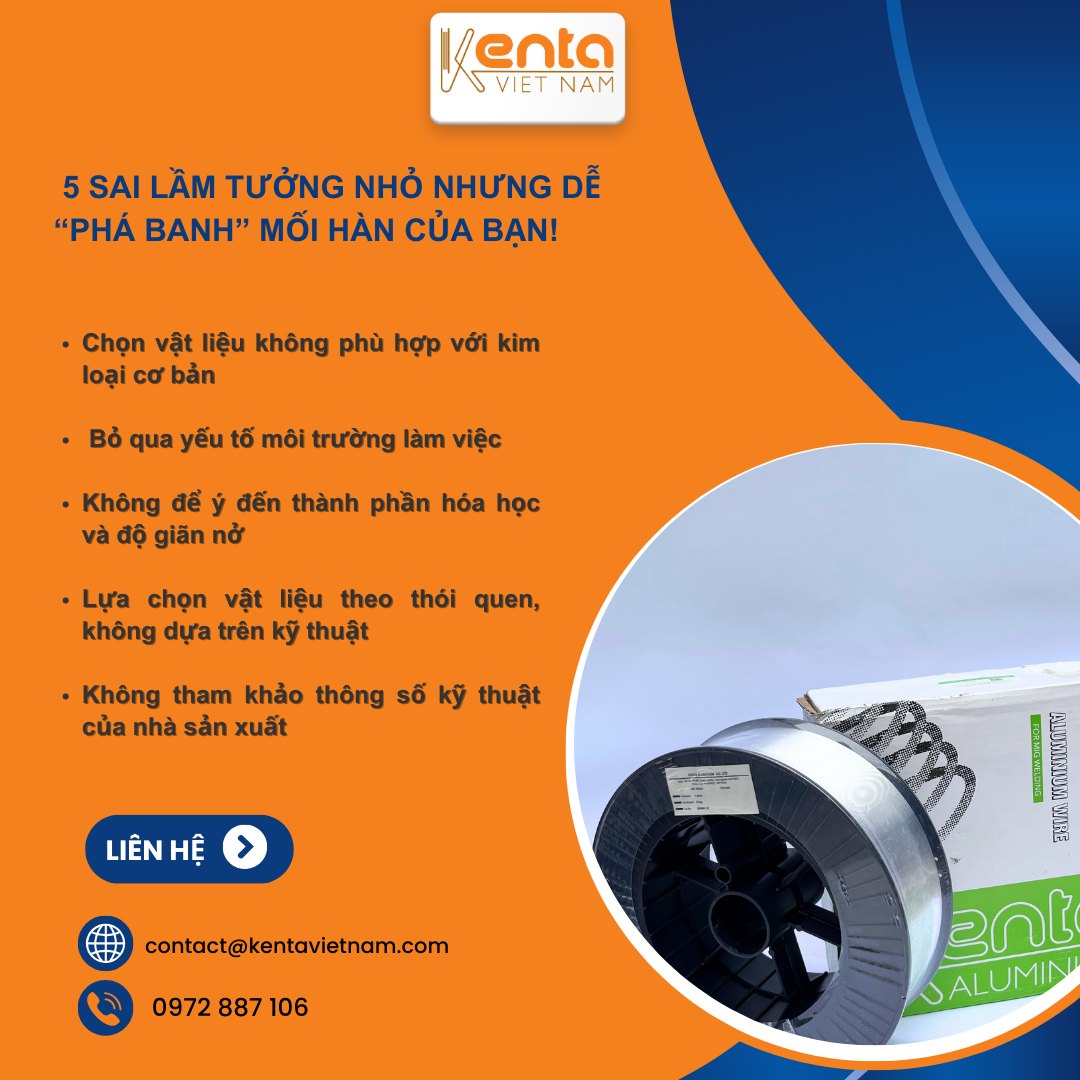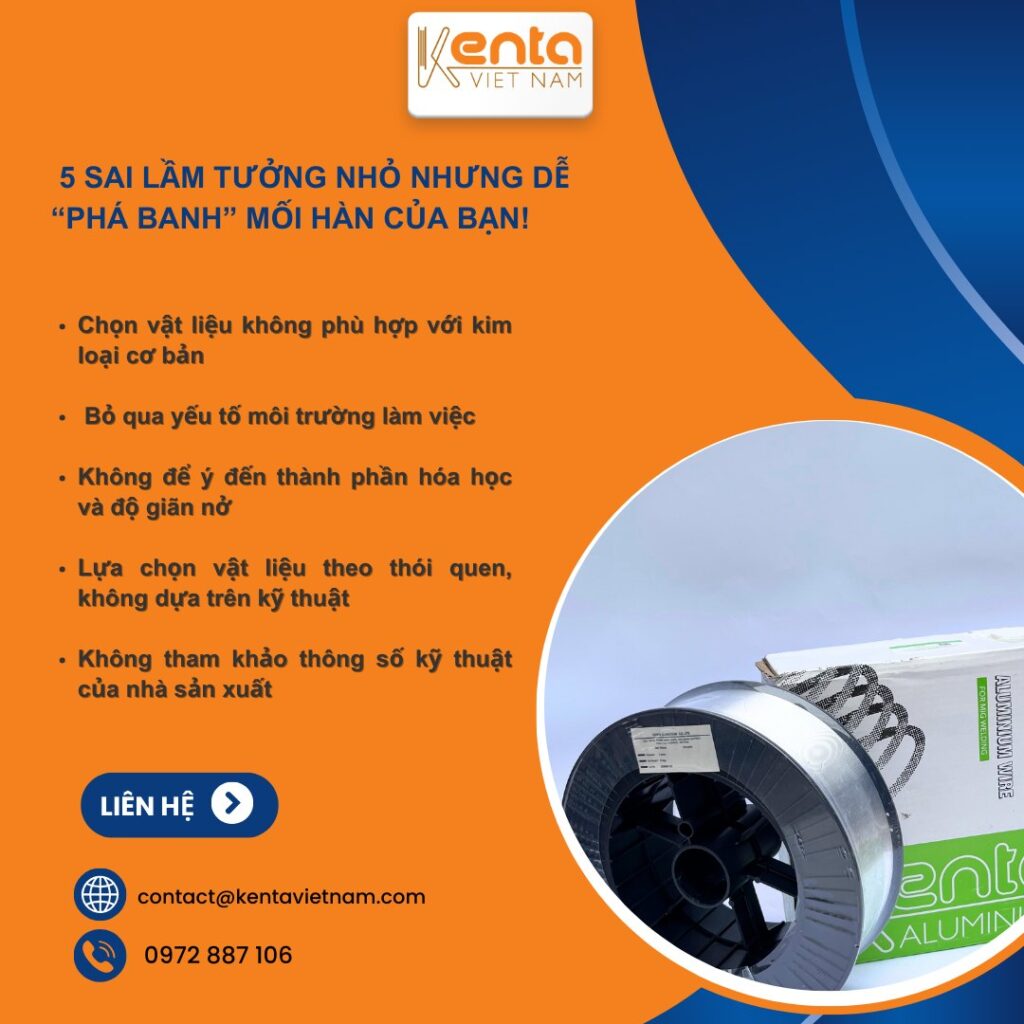Knowledge, Technology
5 WELDING MATERIAL MISTAKES THAT "DESTROY" WELDS IN A SHORT TIME
In the mechanical and construction industries, choosing the right welding material not only determines the strength of the weld but also affects the lifespan and quality of the entire project. However, many people – even skilled welders – still make seemingly minor but extremely serious mistakes. Here are 5 common mistakes when choosing welding materials that you need to pay special attention to to avoid "destroying" your welds!

1. Choosing welding material unsuitable for the base metal
This is the most serious and common mistake.Each type of metal such as carbon steel, stainless steel, aluminum, or copper has its own unique properties. Therefore, the welding material (welding rod, welding wire, flux, etc.) must also be selected based on the type of base metal. Using the wrong material can cause weld cracking, weak bonding, or rapid corrosion over time.
Example: Welding stainless steel with a welding rod for carbon steel can make the weld prone to oxidation and rust. As a result, the structure degrades quickly no matter how precise the welding technique is.
Solution: Before welding, carefully check the characteristics of the base metal and choose compatible welding materialsthat have quality certifications and are recommended by industry experts.
2. Ignoring environmental factors
Did you know that a perfect weld in a workshop may not maintain its quality if exposed to an outdoor environment? Especially in humid, coastal, or chemical corrosive environments,if you do not choose welding materials with rust and corrosion resistance, the weld will severely degrade in a short time.
Many people only focus on the cost of welding materials,ignoring their resistance in harsh environmental conditions.
Solution: When choosing welding materials, consider working conditions such as temperature, humidity, and project location (near the sea, near chemical industrial zones, etc.). Prioritize welding rods or wires with special coatings or alloys with high oxidation resistance.
3. Not paying attention to chemical composition and thermal expansion
A good weld not only needs to ensure physical bonding but also must be chemically and mechanically compatible with the base metal. If the welding material has a significantly different chemical composition from the base metal, when exposed to high temperatures, the difference in thermal expansion will cause warping and cracking of the weld – especially in applications requiring high precision such as in the machinery manufacturing, aerospace, and shipbuilding industries.
Solution: Carefully read the chemical composition of the welding material before use, ensuring high compatibility with the base metal. Additionally, pay attention to the thermal expansion coefficient to avoid residual stress when the temperature changes during operation.
4. Choosing materials based on habit, not technique
Some experienced welders often choose welding materials based on old habits, thinking "this has always worked fine." However, material technology is constantly evolving. New welding materials are not only more durable and easier to use but also save time and construction costs.
Continuing to use outdated materials can lead to low efficiency, high power consumption, excessive smoke, or poor weld quality.
Solution: Always update to new technologies and refer to current material standard tables. Don't hesitate to try new product lines from reputable manufacturers – you might be surprised by the significant improvement in work quality.
5. Not consulting manufacturer's specifications xuất
This is a "subjective" mistake often seen in both amateur and professional welders. Each type of welding material is provided with detailed technical specifications by the manufacturer,including:
- Tensile strength
- Suitable current (AC/DC)
- Optimal welding speed
- Working temperature
- Corrosion resistance, impact resistance, etc.
If you ignore this information, you will find it difficult to maximize the effectiveness of the welding material. In fact, using the wrong current or speed can result in incomplete fusion, porosity, or burn-through of the weld edge.
Solution: Before using any welding material, carefully read the user manual,technical data sheet, or consult the manufacturer's technical expert. This will not only help you weld better but also save time and avoid serious errors later on.
Conclusion
Whether you are a professional welder or just starting, understanding and choosing the right welding material is a key factor determining the success of each weld. Don't let seemingly minor mistakes "destroy" the entire project system. Always be alert, meticulous, and invest appropriately in choosing quality welding materialsthat suit specific conditions and technical requirements.




















